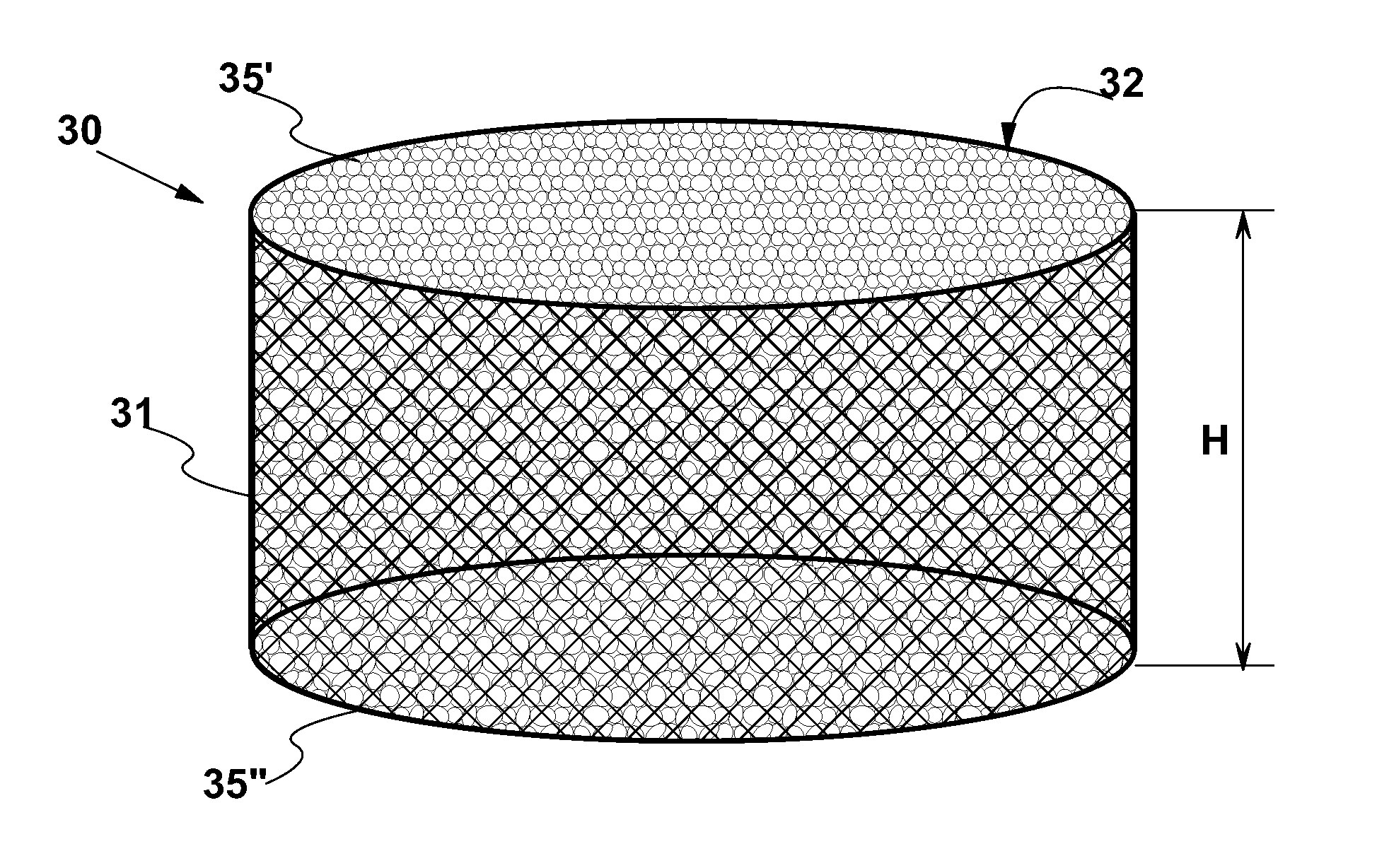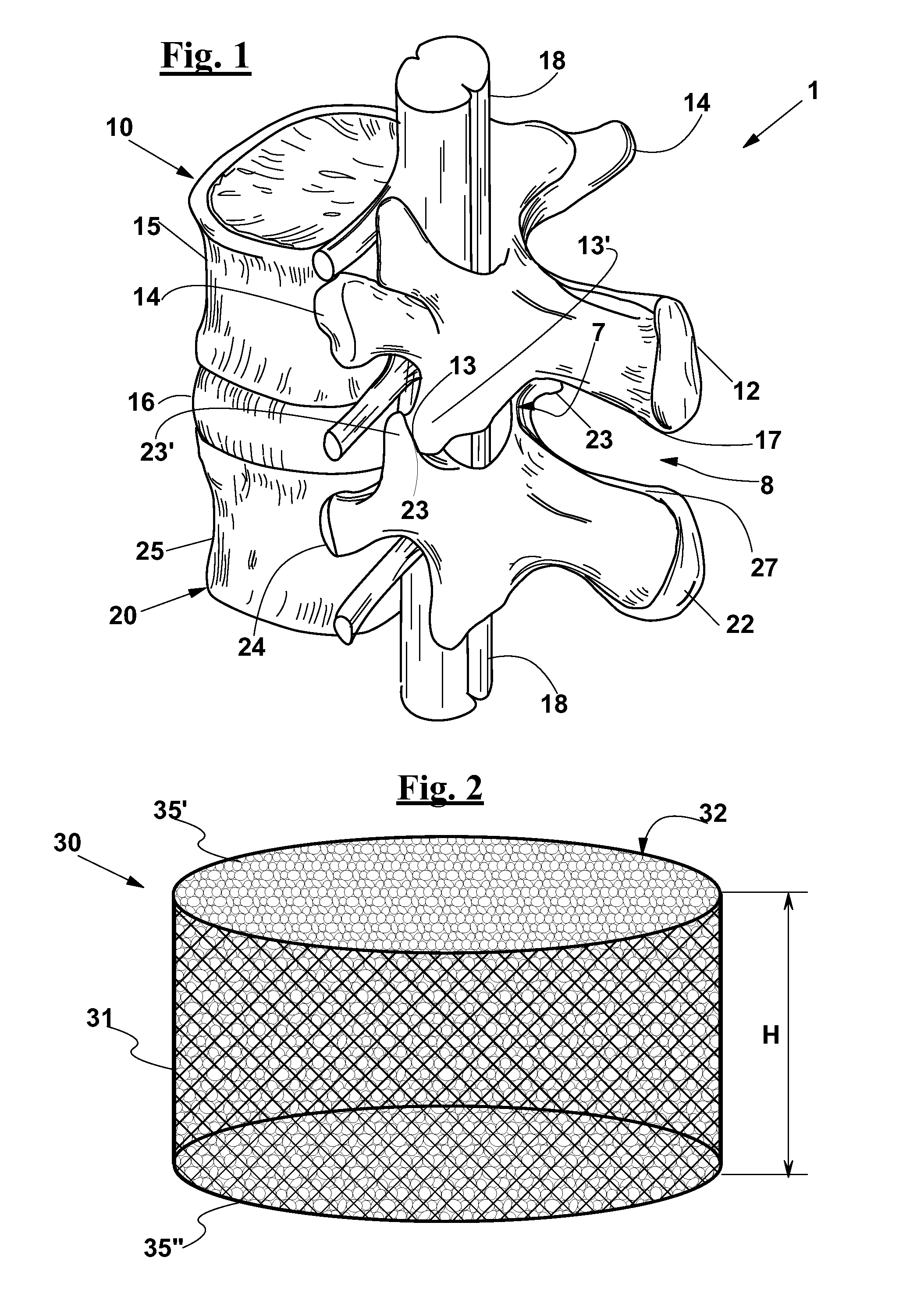Vertebral fusion device and system
- Summary
- Abstract
- Description
- Claims
- Application Information
AI Technical Summary
Benefits of technology
Problems solved by technology
Method used
Image
Examples
Embodiment Construction
[0082]Exemplary embodiments of the vertebral fusion system are described hereinafter, along with vertebral fusion devices of the system according to the invention.
[0083]The involved anatomical parts are indicated in FIG. 1, which shows a subject's spinal segment 1 comprising two adjacent lumbar vertebrae 10 and 20. However, the device according to the invention can be used to form a vertebral fusion at any spinal level, provided that modifications are made that are obvious for a skilled person.
[0084]With reference to FIGS. 2, 3 and 4, a vertebral fusion device 30 is described that comprises a support element including a hollow container body and a predetermined amount of a plastically deformable granular osteosynthesis material 32 arranged in hollow container body 31.
[0085]In the exemplary embodiment of FIG. 1, device 30 has a substantially cylindrical shape, in particular a cylindrical shape with a circular cross section.
[0086]Device 30 may have a height H so as to be configured fo...
PUM
 Login to View More
Login to View More Abstract
Description
Claims
Application Information
 Login to View More
Login to View More - R&D
- Intellectual Property
- Life Sciences
- Materials
- Tech Scout
- Unparalleled Data Quality
- Higher Quality Content
- 60% Fewer Hallucinations
Browse by: Latest US Patents, China's latest patents, Technical Efficacy Thesaurus, Application Domain, Technology Topic, Popular Technical Reports.
© 2025 PatSnap. All rights reserved.Legal|Privacy policy|Modern Slavery Act Transparency Statement|Sitemap|About US| Contact US: help@patsnap.com



